History of the Border Collie
Background
The modern Border Collie is recognized to be an extremely intelligent, athletic, and energetic breed. The breed originated in Northumberland on the borders of England and Scotland, having been developed over centuries for herding sheep. There is some debate over the origins of the breed, although they are likely traced back to the Romans two thousand years ago who brought their drover dogs with them, and the Vikings who invaded this part of England some 1200 years ago and brought their Spitz-type dogs with them. Regardless of its origins, the Border Collie is now recognized as the ultimate herding dog with a natural instinct to herd using its “eye” (controlling livestock by staring at them in a silent and controlled manner) that is unlike any other dog breed.
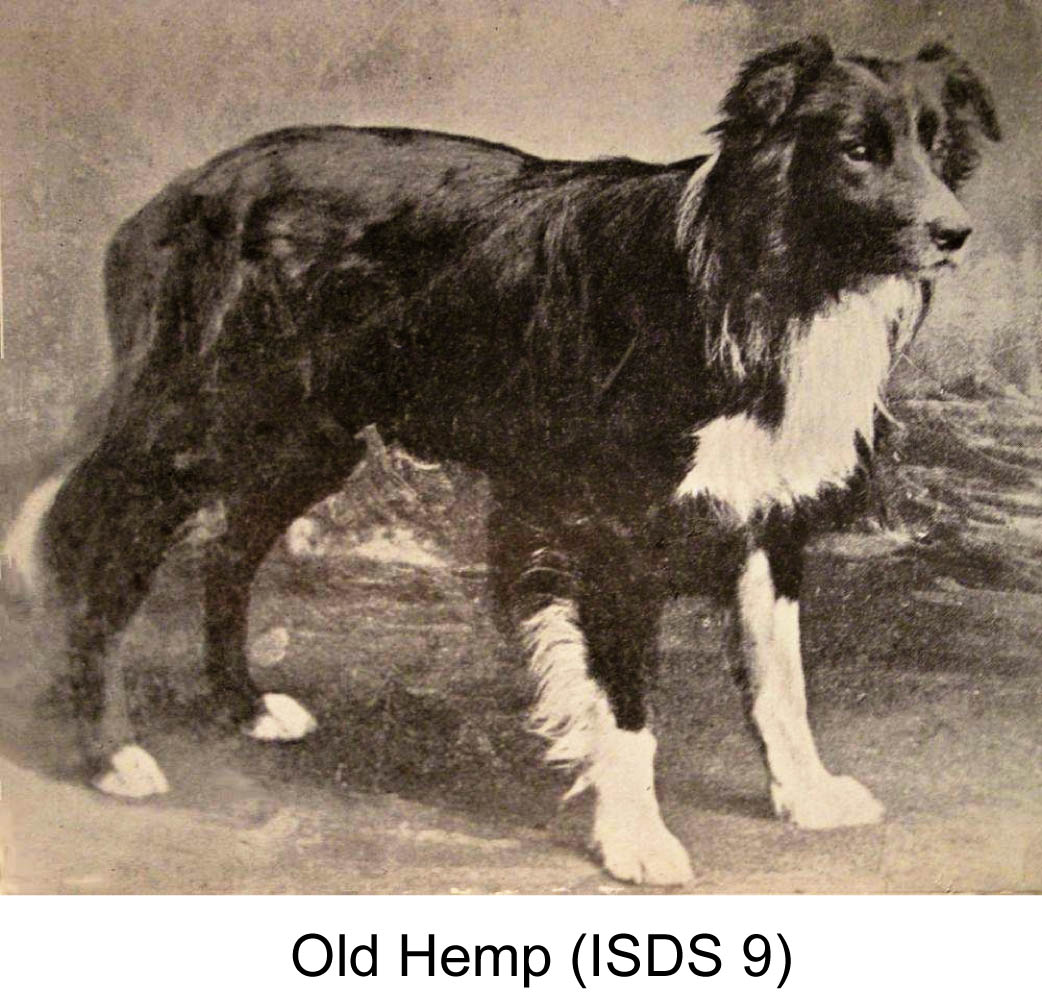 Old Hemp, a rough coat tri-color dog bred by Adam Telfer in 1893 from a strong-eyed, reticent mother (dam) and a loose-eyed but good-natured father (sire), moved sheep intensely but quietly unlike the louder sheepdogs of the era and was far more mild-mannered (biddable). Old Hemp was therefore bred extensively, siring over 200 pups, and all modern Border Collies can trace their ancestry back to Old Hemp (many times over!). He is considered the foundation “sire” of the breed. The term “Border Collie” was first used in 1915 by James Reid, secretary of the newly established International Sheep Dog Society (ISDS), to describe the breed and to differentiate it from other collie breeds. The ISDS established the first Border Collie registry and Old Hemp was registered as ISDS 9 postumously.
Old Hemp, a rough coat tri-color dog bred by Adam Telfer in 1893 from a strong-eyed, reticent mother (dam) and a loose-eyed but good-natured father (sire), moved sheep intensely but quietly unlike the louder sheepdogs of the era and was far more mild-mannered (biddable). Old Hemp was therefore bred extensively, siring over 200 pups, and all modern Border Collies can trace their ancestry back to Old Hemp (many times over!). He is considered the foundation “sire” of the breed. The term “Border Collie” was first used in 1915 by James Reid, secretary of the newly established International Sheep Dog Society (ISDS), to describe the breed and to differentiate it from other collie breeds. The ISDS established the first Border Collie registry and Old Hemp was registered as ISDS 9 postumously.
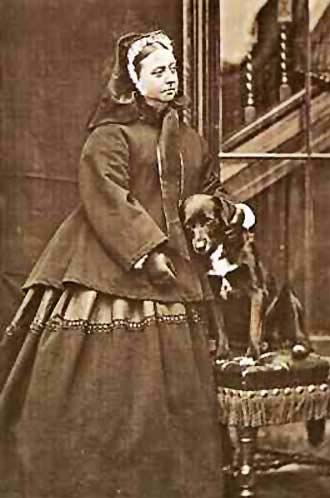 “Herding trials” were occurring by this time as competitions reflecting friendly rivalry between neighboring farmers and their pride in their Border Collies. The first recorded trial occurred in Wales in 1873. The ISDS was founded in 1906 with the intention of improving the shepherd’s dog, and they held the first “International Trials” shortly thereafter, awarding top dogs with the title “International Supreme Sheep Dog Champion” ever since.
“Herding trials” were occurring by this time as competitions reflecting friendly rivalry between neighboring farmers and their pride in their Border Collies. The first recorded trial occurred in Wales in 1873. The ISDS was founded in 1906 with the intention of improving the shepherd’s dog, and they held the first “International Trials” shortly thereafter, awarding top dogs with the title “International Supreme Sheep Dog Champion” ever since.
Significant development of the breed occurred in the nineteenth century. Queen Victoria became acquainted with the (border) collies on her Balmoral estate, and the breed became a favorite of hers. She owned many (border) collies during her long reign. Sharp, a smooth-coated (border) collie pictured right with the queen, was born in 1854 and became a favorite and constant companion to the queen. Later favorites included Noble, a rough-coated tricolor (border) collie. Patronage by the queen led to wider ownership of the breed beyond sheep farmers and by the end of the nineteenth century it had become a fashionable breed, transformed from a rough and ready working dog to become an elegant, refined dog. The first collie breed clubs sponsoring dog shows appeared at that time.
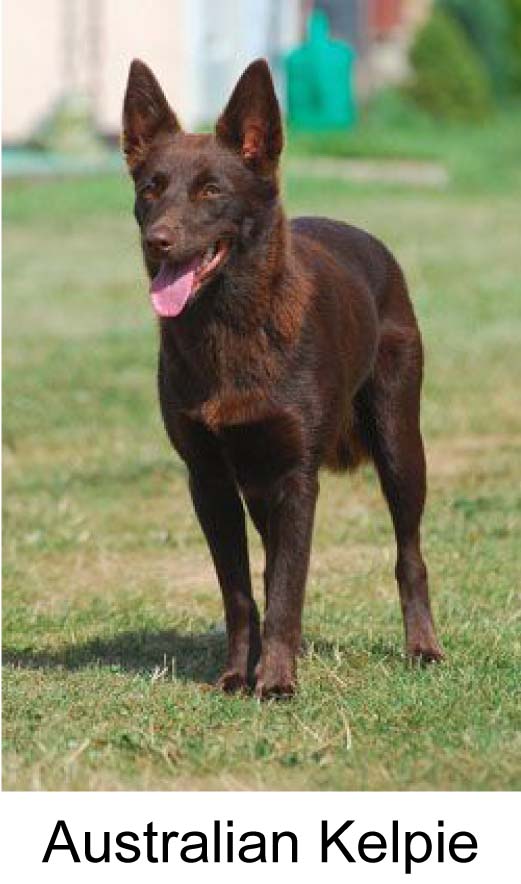 Additionally, (border) collies moved around the world during the colonial era to help with sheep farming. First introduced to Australia 200 years or more ago, interbreeding with the native dingo occurred during the mid nineteenth century resulting in the modern Kelpie. The Kelpie is now the favored herding breed in Australia capable of dealing with the harsh Australian Outback, opening up large sections of the Australian Outback that would otherwise have been inaccessible to sheep farmers. Offspring of top herding champion Border Collies were exported from England to Australia at the turn of the twentieth century and interbred with Kelpies at that time resulting in the modern Australian lines of Border Collie.
Additionally, (border) collies moved around the world during the colonial era to help with sheep farming. First introduced to Australia 200 years or more ago, interbreeding with the native dingo occurred during the mid nineteenth century resulting in the modern Kelpie. The Kelpie is now the favored herding breed in Australia capable of dealing with the harsh Australian Outback, opening up large sections of the Australian Outback that would otherwise have been inaccessible to sheep farmers. Offspring of top herding champion Border Collies were exported from England to Australia at the turn of the twentieth century and interbred with Kelpies at that time resulting in the modern Australian lines of Border Collie.
Border Collie “Types”
Further development of the breed occurred in the twentieth century. The ISDS promoted breeding for herding ability and, as a result, International Supreme Champions were popular stud dogs resulting in four recognizable “types” of Border Collie. The following information is courtesy of the late Kelly Whiteman of Bonnidune Border Collies, derived from Grew, S. (1993) Key Dogs from the Border Collie Family (Revised Edition). M.S. Hernando. MS (Ed.), Heritage Farms Pub. Co.:
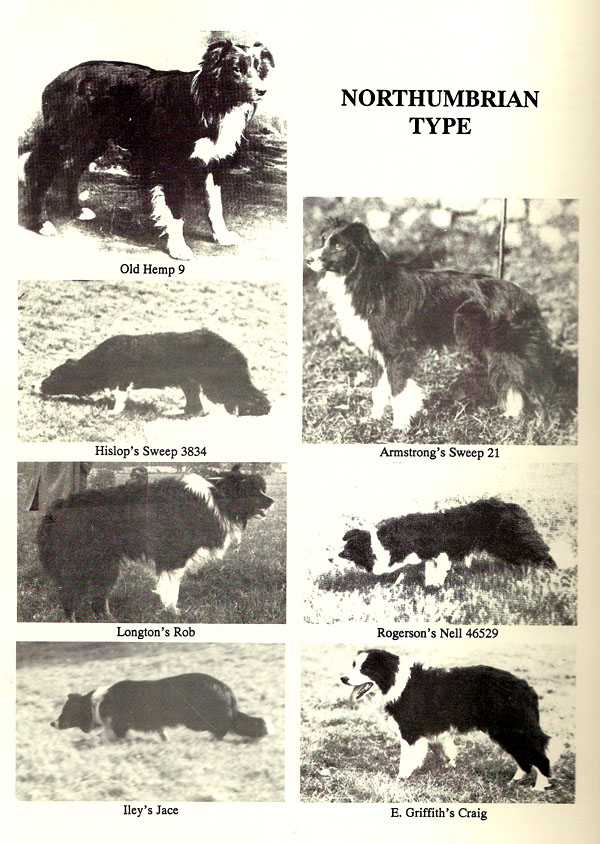
Old Hemp epitomized the Northumbrian Type of Border Collie; medium-sized with a rough coat and very little white trim. Every branch of the pedigrees of our dogs traces back to Old Hemp!
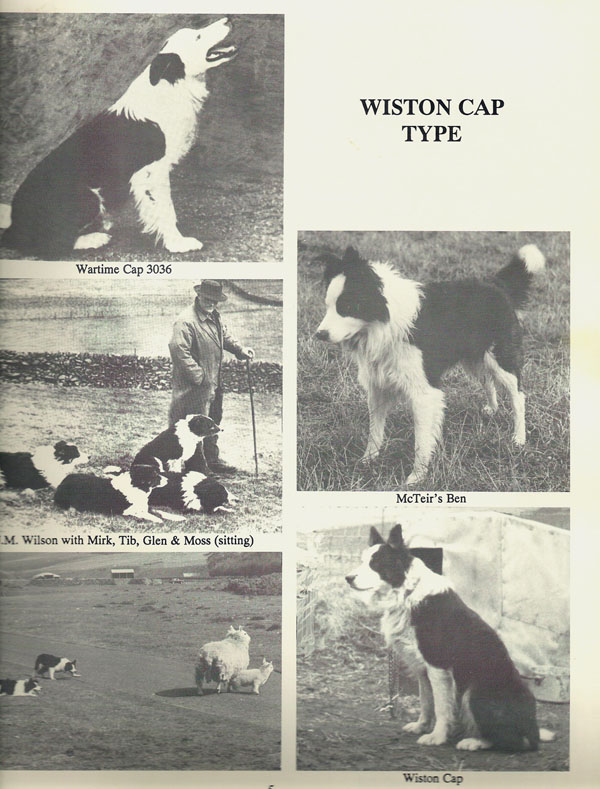
The Wiston Cap Type was developed from from J.M. Wilson’s dog, “Wartime” Cap (born 1937), through Jock Richardson’s outstanding trial and stud dog Wiston Cap (born 1963). Also rough coated, these dogs tend to be larger, with big, blocky heads and much more white trim (collars, chests, forelegs). They typically have tremendous natural outruns and biddable natures. Many of the modern Border Collie show lines (including ours) derive from this type.
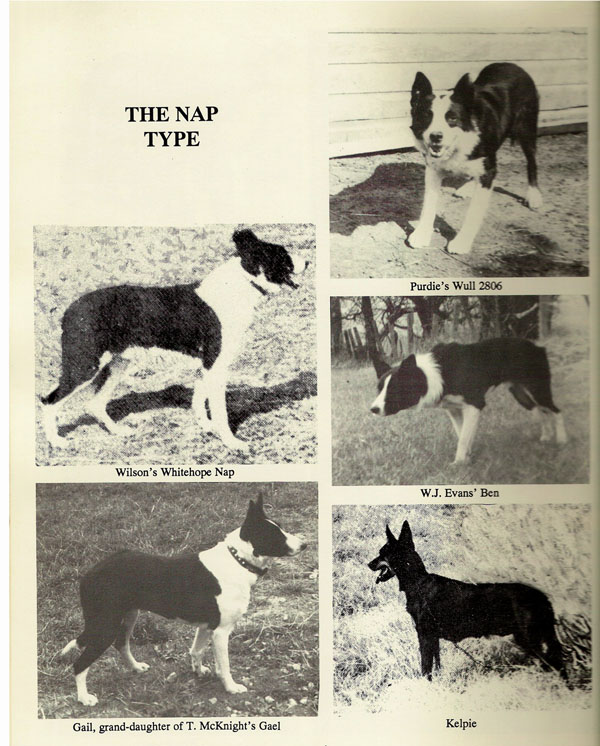
Of the four types of Border Collies, the Nap Type is the only smooth coated one (the smooth coat is the result of a single dominant gene). The name comes from a dog called Whitehope Nap (born 1951). These dogs are strong, fast, and powerful. Their coat is short, but has an undercoat to act as insulation from cold or heat. Many have longer legs and shorter bodies, making their outline more square than the other types. Because of their short coats, speed, and power, many Americans used them to work cattle on large ranches in the Southwest and this is main working type seen today in the western US. This type has evolved into the most commonly seen type at herding trials in the US with lighter, faster dogs being more competitive and the short coat probably being favored for picking up less dirt.
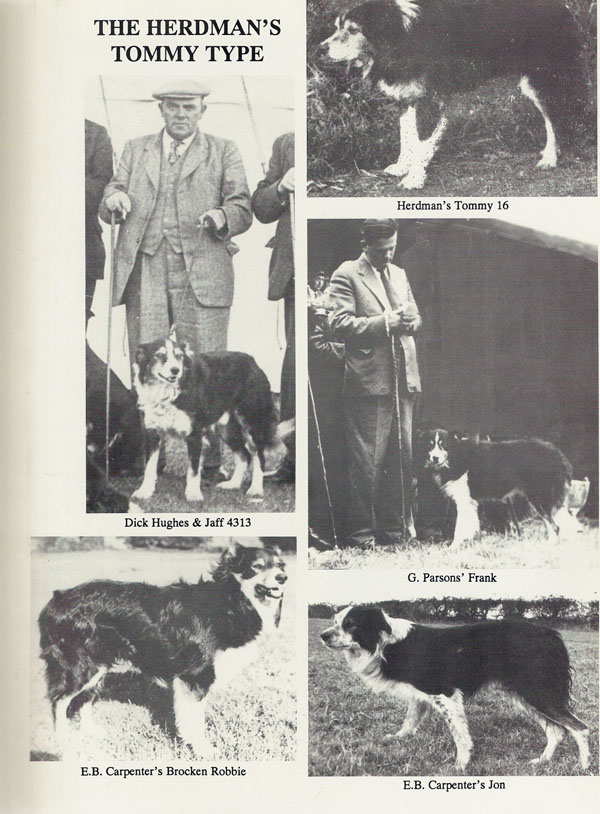
The last type is named after an Old Hemp grandson, Herdman’s Tommy. Three of the four main breeding lines tracing back to Old Hemp go through Tommy. Physically, Tommy was a medium-sized dog with a lot of bone. His rough coat was black and white with tan markings. This type is known for its good nature, power, and strong-headedness.
Recent Developments
As the Border Collie evolved as a working breed in the latter half of the nineteenth century, many herding trials (including the first recorded trial in 1873) also had a “type” competition after the dogs ran the course. The "type" competition was, essentially, what we today call a dog show. The dogs were evaluated on physical structure to determine which was best suited to perform the job of sheepherding. The farmers and shepherds who participated in the first trials and type competitions were, above all else, stockmen. As stockmen, they were comfortable with the idea of evaluating an animal's physical structure against a standard based upon the animal's purpose, whether that purpose was wool production, meat for marketing, or working stock.
Breed standards are written to describe the physical structure of a dog and, for the Border Collie, have been written to define those aspects of structure that contribute to the working style of the dog and the four recognizable "types" described above. At a dog show, dogs are judged against that “breed standard”. The first written “breed standard” for the Border Collie came from the New Zealand Kennel Club in 1927 in collaboration with the Sheep Dog Trial Association in that country.
Breed standards followed in Australia (1940s), with the Australian breed standard then being used as an interim “breed standard” in the UK before being replaced by the UK Kennel Club (KC) breed standard developed in cooperation with the ISDS in the late 1970s. The KC breed standard was designed to incorporate the four “types” of ISDS dogs described above with input from ISDS. The ISDS stud book was made available to the KC at that time, enabling Border Collie pedigrees to be registered with the KC following its recognition by the KC in 1976. All Border Collies in the UK were, at that time, registered with ISDS, and the newly registered KC dogs had dual registration.
The Border Collie subsequently achieved recognition by the American Kennel Club (AKC) in 1995, with the breed standard being based upon the KC standard from the UK. The AKC Border Collie parent club is the Border Collie Society of America (BCSA), of which we are active members.
It should be mentioned that there was, and continues to be, considerable opposition to KC and AKC recognition of the Border Collie by ISDS and their US counterpart, the American Border Collie Association (ABCA). ISDS leadership was split regarding working with the KC when the KC recognized the breed in 1976. Both ISDS and ABCA were founded to improve the breed as a herding dog, and their valid concern was/is that breeding for any purpose other than to improve upon the herding ability of the breed will dilute that herding ability. That necessarily includes breeding to a “breed standard” for the conformation show ring. Recognition of the Border Collie by AKC in 1995 was therefore vehemently opposed by ABCA, and they have stated that any ABCA registered dog will be automatically deregistered by ABCA if it achieves an AKC conformation championship, regardless of herding ability.
Certain ABCA members therefore have a strong prejudice against AKC registered Border Collies. Our dogs are AKC registered conformation champions and, while they are descended from Wiston Cap and proven in herding, you should be aware of this if you purchase a puppy from us and plan to train with an ABCA member herding trainer. If you are interested in getting a puppy from us and plan on participating in herding activities with it, please let us know when filling out the questionnaire and (a) we will match a suitable puppy to you as part of our puppy evaluation process, and (b) we can assist in finding a suitable herding trainer.
The Future of the Breed
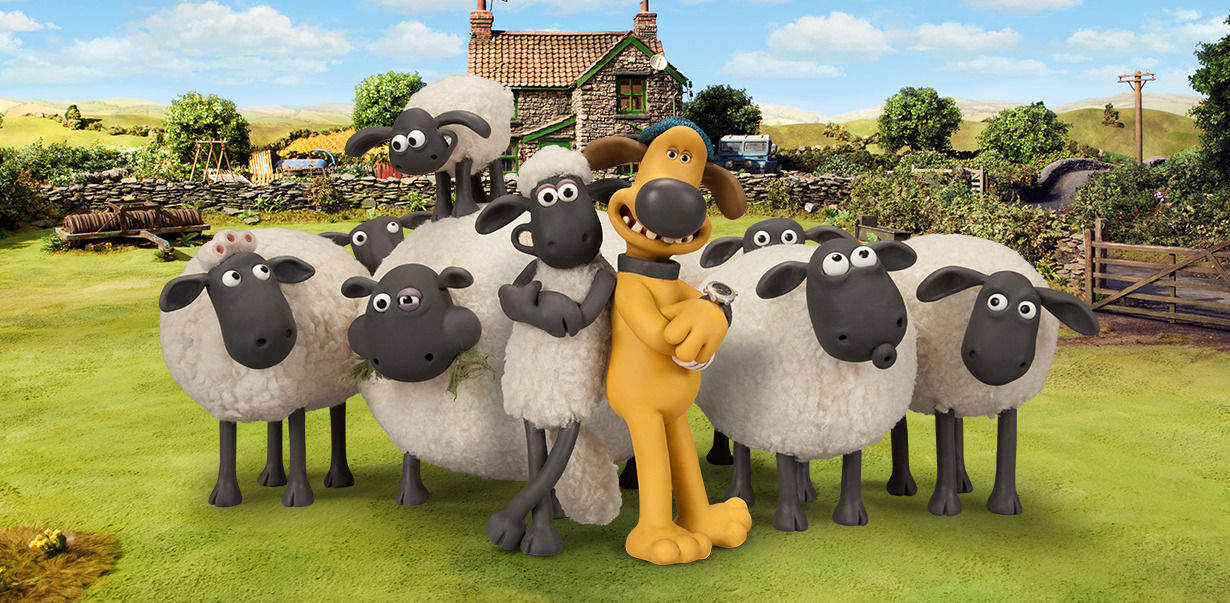
The Border Collie evolved over hundreds of years, first acquired its name a little over 100 years ago, and it has continued to evolve since then. As a versatile breed, different groups of breeders will inevitably focus upon different qualities that the Border Collie possesses and it is the sad truth that it will be taken in different directions by those groups.
The strong herding instinct and intelligence is prized by shepherds, and their focus is naturally upon maintaining and improving upon the natural herding ability of the breed. Inevitably the physical "type" will continue to evolve among this group, and we are already seeing some ABCA registered dogs with strong herding instinct that do not readily fit into any of the four ISDS "types" listed above.
Agility competitors favor fast, agile, smaller dogs. It is likely that the average size of Border Collies among this group will decrease over time (miniature Border Collies?).
Preservation breeders such as ourselves breed to maintain "type" while improving upon the overall health of the breed. That is the purpose of the conformation dog show. We are fortunate in having the time, resources, and access to livestock thanks to a local trainer that enables us train and pursue herding activities with our Border Collies, and maintaining the herding ability of the breed forms part of our breeding program. However, many conformation breeders do not have the same time, resources, and access to livestock for pursuing herding activities, and their breeding programs may not be able to factor in herding ability. Sadly, therefore, the fears of the ISDS and ABCA are slowly being realized as we are starting to see the herding instinct being lost within the conformation show lines.
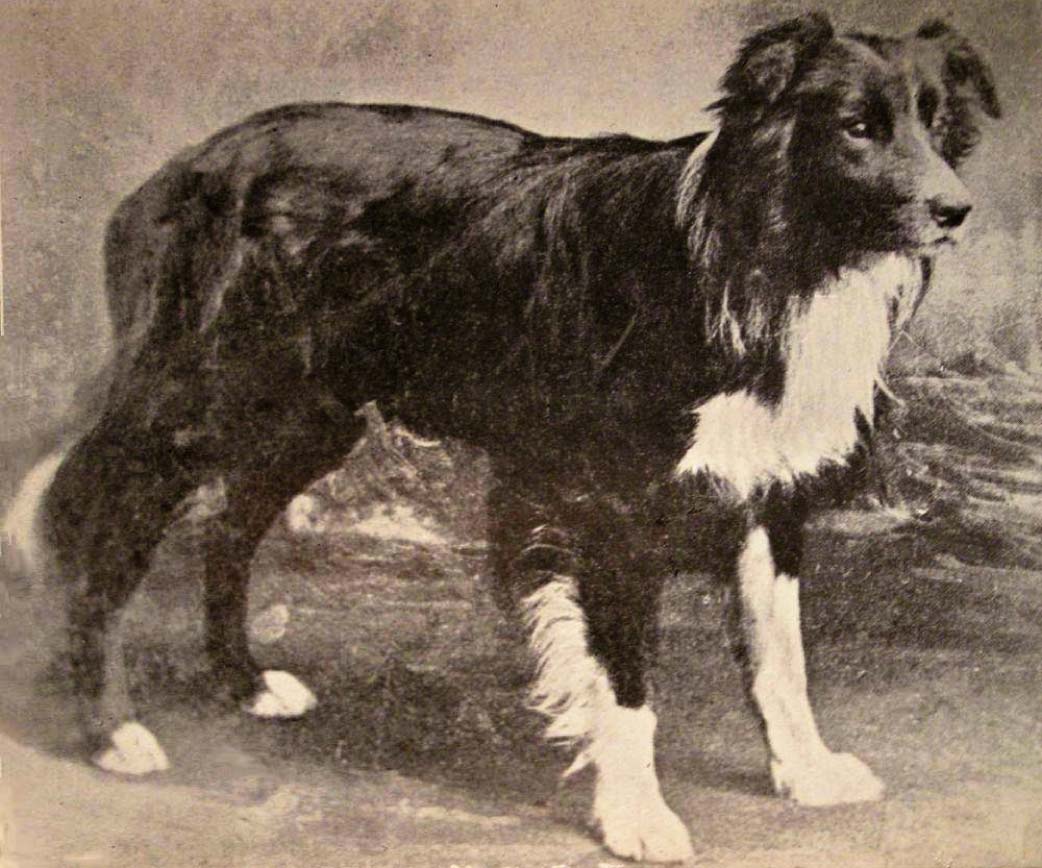 Border Collie History
Border Collie History